You’ll spot fake consoles by examining packaging for blurry logos and grammatical errors, verifying serial numbers on the manufacturer’s website, and evaluating build quality for misaligned branding or lightweight materials. Compare pricing against market value—avoid PS5s under $350 or Xbox Series X under $300. Test performance by running games to check graphics quality and system response speed. Inspect controllers for poor construction and research seller reputation thoroughly. These techniques will protect your investment and reveal additional warning signs.
Examine Packaging and Official Branding Elements
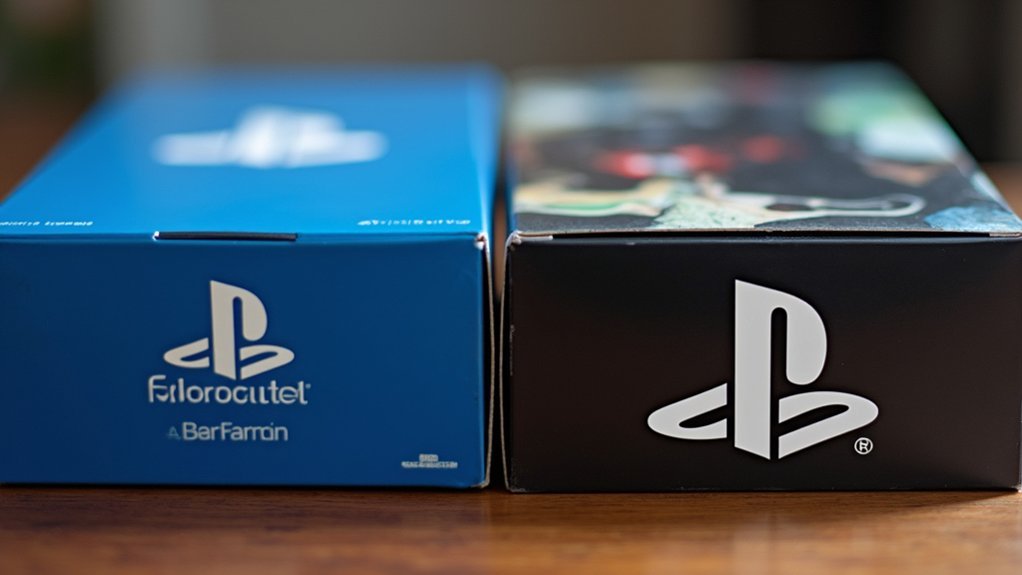
The packaging tells the first story about a console’s authenticity, and you’ll want to scrutinize every detail before making a purchase.
Start by examining the print quality—authentic packaging features crisp, high-resolution official logos with no blurry text or grammatical errors. Counterfeit boxes often display incorrect branding or misspellings that immediately signal a fake.
Check the packaging’s physical condition carefully. While genuine consoles may show normal wear like scuffs or folds, fakes often appear suspiciously glossy and pristine.
Verify that weight and dimensions match official specifications, as counterfeits frequently deviate from these standards.
Most importantly, examine serial numbers on the packaging. They should be consistent and match those on the console itself—any discrepancies indicate a counterfeit product you should avoid.
Verify Serial Numbers and Identification Codes
Beyond the packaging inspection, you’ll need to verify the console’s serial numbers and identification codes to confirm authenticity.
Always check the console’s serial number against the manufacturer’s official support website to guarantee it’s valid and corresponds to your specific model. Authentic consoles have serial numbers in designated locations, so familiarize yourself with expected placements for your console brand.
Verify your console’s serial number through the manufacturer’s official website to confirm authenticity and model correspondence.
Be wary of discrepancies like missing or incorrect serial numbers, as these are common indicators of counterfeit goods.
Identification codes, such as those starting with “DMG” for certain consoles, should match known patterns verifiable through online resources.
When examining game packaging, verify identification codes are present and correctly formatted, helping you distinguish between authentic and fake products effectively.
Assess Build Quality and Physical Construction
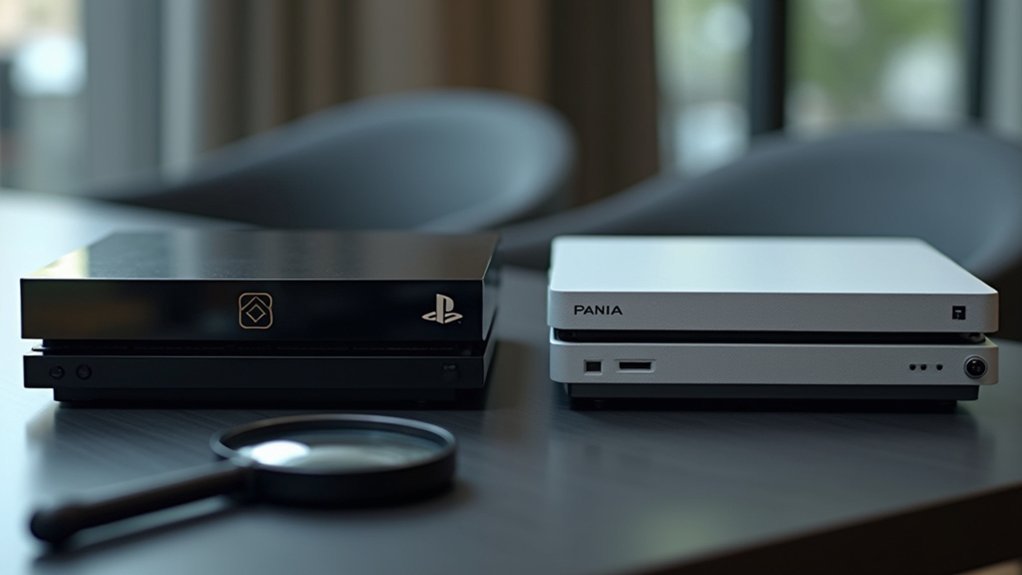
Check for properly aligned logos and branding; counterfeits frequently show misspellings or misaligned graphics.
You’ll notice rough edges and lightweight components in fake devices.
If you’re comfortable opening the console, inspect internal components—genuine units have well-organized, high-quality circuit boards, while fakes lack proper assembly and organization.
Compare Pricing Against Market Value
While physical inspection reveals important clues about authenticity, price often serves as your first red flag when hunting for genuine consoles. When you compare pricing against established market value, you’ll quickly identify suspiciously low offers that scream counterfeit.
Research completed sales on eBay and check gaming forums to establish fair market pricing. Popular consoles typically maintain consistent value ranges:
| Console Model | Market Range | Red Flag Price |
|---|---|---|
| PS5 | $400-$700 | Under $350 |
| Xbox Series X | $350-$600 | Under $300 |
| Nintendo Switch | $250-$400 | Under $200 |
Use multiple reputable sources like price comparison websites to verify current market trends. If you spot deals drastically below average selling prices, investigate further—counterfeit consoles often use reduced pricing to attract unsuspecting buyers.
Test Console Performance and Functionality
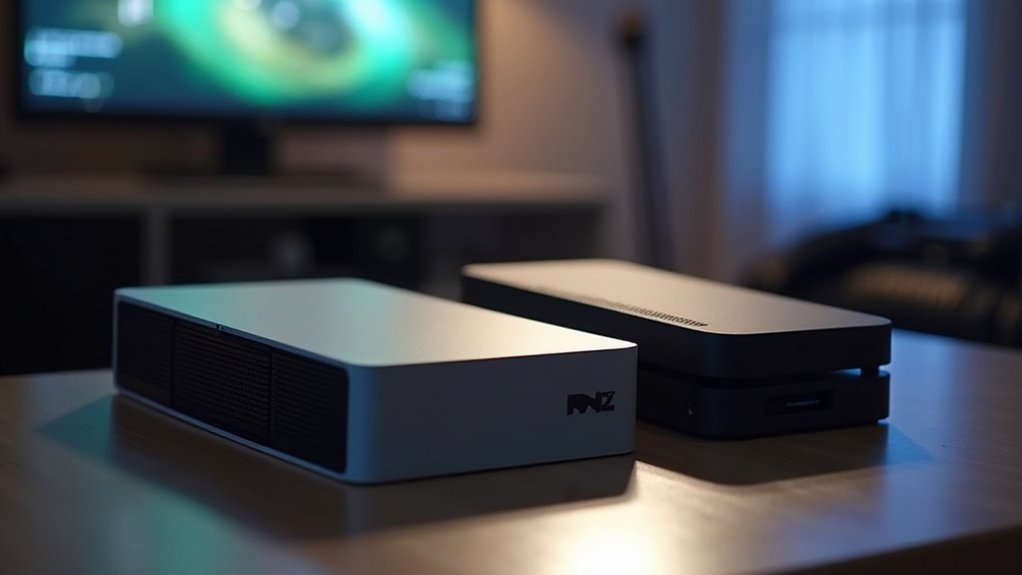
You’ll want to run actual games on the console to evaluate how well it performs under normal operating conditions.
Pay close attention to the graphics quality during gameplay – legitimate consoles should deliver crisp visuals without pixelation, color distortion, or frame drops.
Check the system’s response speed when maneuvering through menus, loading games, or switching between applications, as sluggish performance often indicates counterfeit hardware.
Graphics Quality Assessment
Testing a console’s graphics performance reveals critical differences between authentic and counterfeit devices.
You’ll want to run trusted games and examine whether visuals render at expected resolution and detail levels for your specific model. Watch for smooth frame rates and minimal lag during gameplay, as performance issues often indicate fake hardware.
Check your console’s settings menu for accurate system information and proper brand logos. Any discrepancies might suggest tampering or counterfeiting.
If possible, conduct side-by-side comparisons with verified authentic consoles to spot significant differences in graphics quality.
Pay close attention to unusual artifacts, glitches, or inconsistent performance during gameplay. These warning signs typically point to inferior hardware components commonly found in counterfeit devices.
System Response Speed
How quickly does your console respond when you power it on or navigate between menus? System response speed serves as a vital indicator when evaluating authenticity.
You’ll want to test your console’s performance by launching games or applications – genuine units should load quickly without noticeable delays or lag. Monitor the user interface carefully for fluid changes and prompt navigation; any stuttering or slow response could signal something’s too good to be true about that bargain console.
Pay attention to graphics quality during gameplay, as authentic games and consoles render visuals smoothly without distortion. Fake devices often struggle with performance consistency.
Test online connectivity by accessing services – legitimate consoles connect reliably without frequent dropouts. Consider conducting benchmark tests using trusted games to measure frame rates against known specifications.
Inspect Controllers and Included Accessories
While examining the console itself provides essential clues, the controllers and accessories that come with your purchase often reveal the most telling signs of authenticity.
Start by weighing the controllers in your hands—authentic ones feel substantially heavier and more solid due to quality materials, while counterfeits often feel flimsy or lightweight.
Genuine controllers have noticeable weight and solid construction, while fake ones typically feel cheap and flimsy when handled.
Test for built-in features like haptic feedback and adaptive triggers, which are standard in genuine controllers but frequently missing in fakes.
Examine all logos and labels carefully, as counterfeit accessories commonly display misspelled branding or poor print quality.
Verify that included items match official specifications—power cables, HDMI cords, and manuals should all align with manufacturer standards.
Finally, test functionality by connecting controllers and checking for seamless response times.
Research Seller Reputation and Purchase History
Beyond examining the physical console and accessories, you’ll want to thoroughly investigate the seller’s background before making any purchase.
Check seller ratings and reviews on platforms like eBay or Amazon to assess their reliability. Focus on feedback from previous buyers regarding authenticity experiences. Look for sellers with extensive successful transaction histories, as established sellers rarely engage in counterfeit sales.
Examine their purchase history for red flags like multiple rare console listings, which could indicate suspicious activity. Ask specific questions about the item’s provenance and their expertise—honest sellers provide clear, informative responses.
Utilize gaming forums and community groups to research seller reputation and gather insights about known counterfeit issues. This thorough vetting protects you from fraudulent transactions.
Frequently Asked Questions
How to Spot a Fake PS5 Console?
You’ll spot fake PS5s by checking the price range ($400-700), weighing it (should be 9.9 lbs), verifying the serial number, testing controller features, and confirming smooth performance with preloaded Astro’s Playroom.
How to Identify a Fake PS4 Console?
You’ll identify fake PS4 consoles by checking if prices fall below $300, verifying serial numbers with Sony, testing the interface’s responsiveness, and examining build quality for sturdy construction.
How to Spot Counterfeit Games?
You’ll spot counterfeit games by checking for blurry printing, missing official logos, incorrect identification codes, poor label quality, and suspiciously pristine condition that lacks authentic wear patterns.
How to Spot a Fake Super Nintendo Console?
You’ll spot fake Super Nintendo consoles by checking their weight, examining official branding for errors, inspecting cartridge slot fit, verifying serial numbers against databases, and evaluating build quality materials.
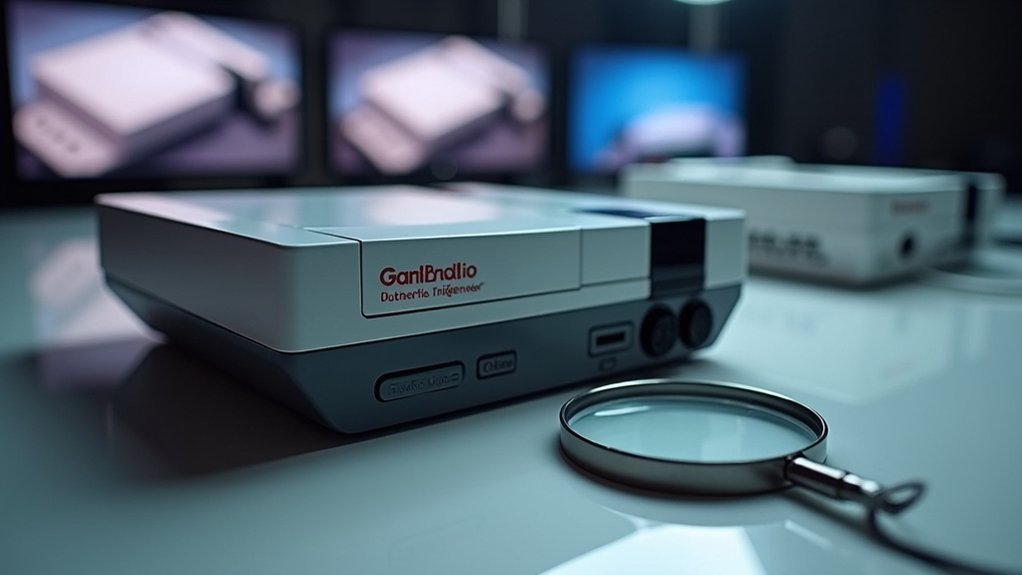
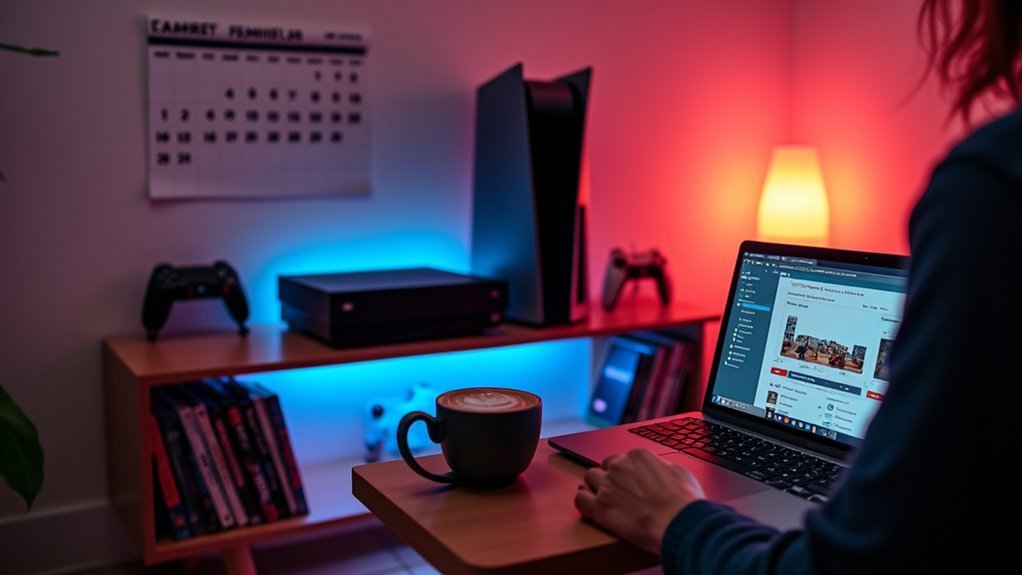

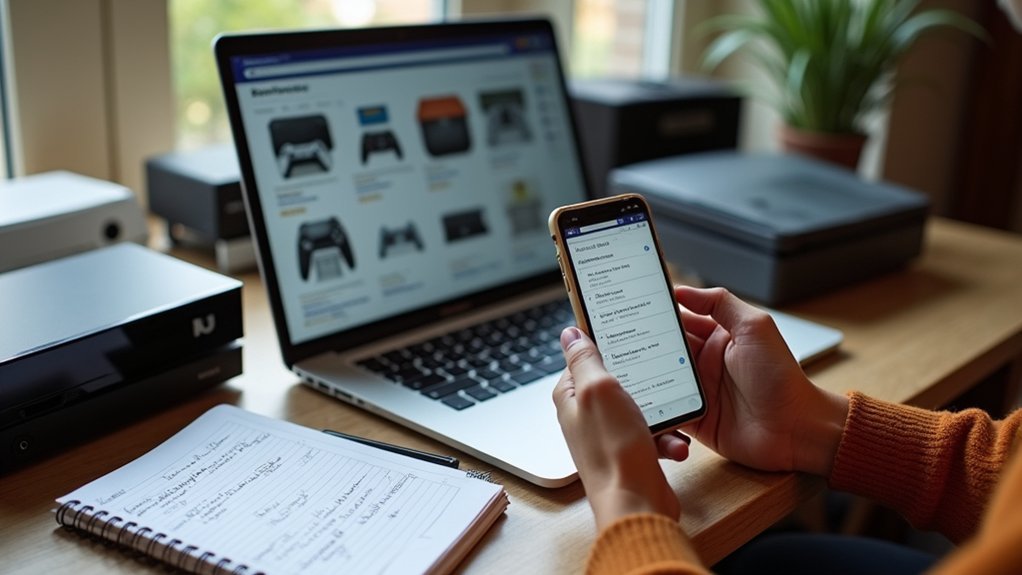
Leave a Reply